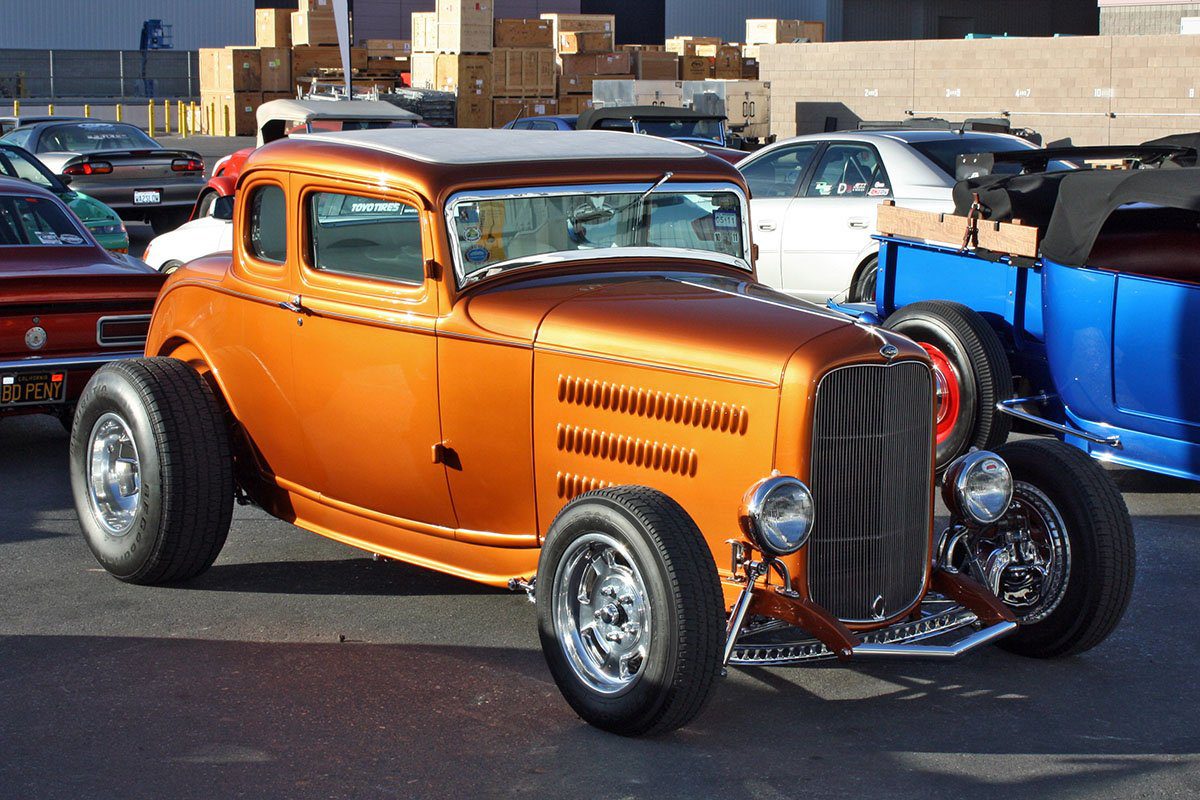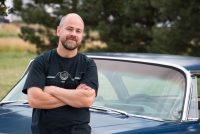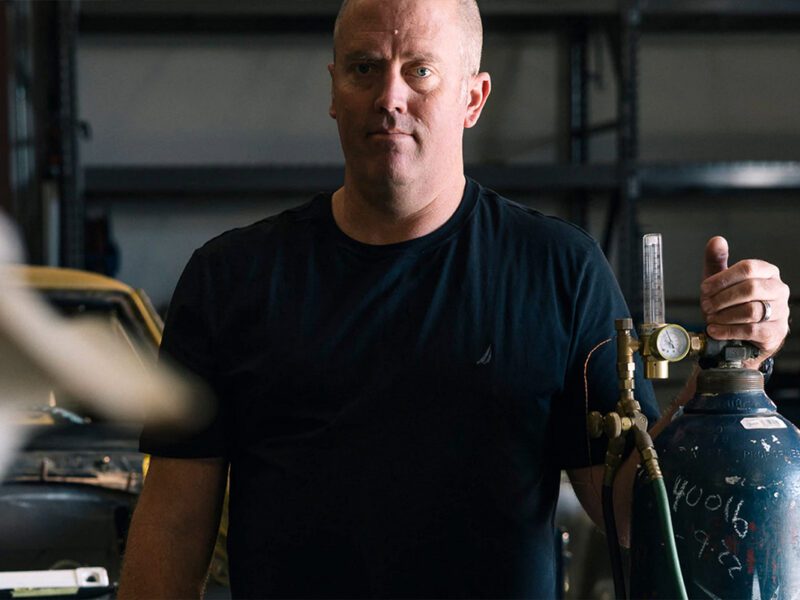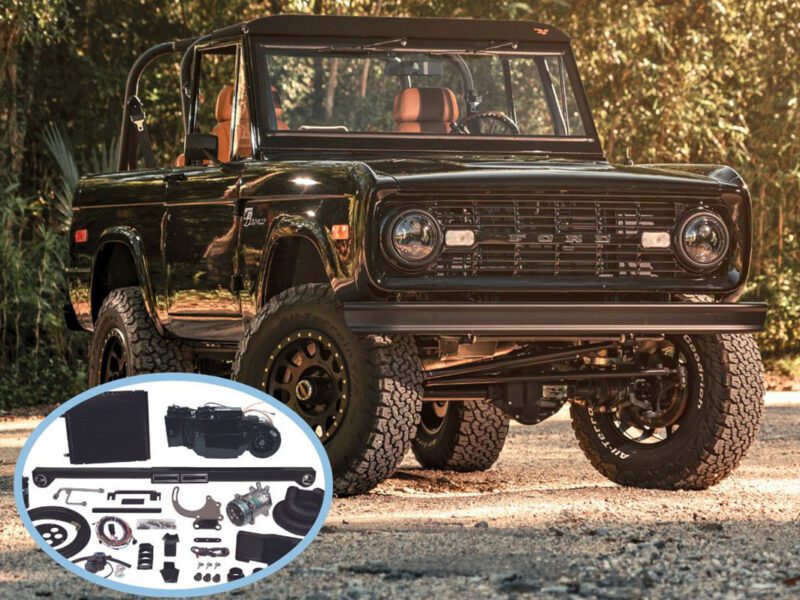5 Minutes With Rick Love
Rick Love knows how to keep his cool – and how to keep you cool, too. He’s worked for Vintage Air for more than 20 years and has more than 35 years of experience installing the company’s air conditioning products. A lifelong hot rodder, Love’s career at Vintage Air has been an ideal way to blend his degree in electronics and his passion for cars.
Love was named Vintage Air’s president earlier this year. In addition to overseeing the day-to-day operations at the San Antonio-based company, he can frequently be found at rodding events and leading technical seminars. He has long been active in the industry, too, serving on a variety of boards and committees in the Specialty Equipment Market Association (SEMA). Love was inducted into the SEMA Hall of Fame earlier this year.
We caught up with Rick Love to talk hot rods, road trips, and what it takes to stay cool in a hot rod.
Goodguys: What was your first car?
Rick Love: A ’66 Dodge Coronet R/T. My first real hot rod was a ’74 GTO. It was a four-speed car and we swapped in a ’67 400. It was the last year of the GTO and had a shaker hood scoop.
GG: What specialty cars are in your current stable of vehicles?
Love: The ’39 Ford that I’ve had for nearly 40 years. That always will be my favorite. I just finished rebuilding it after 180,000 miles. We tried to make it look basically like it did before – it’s just a whole lot better car this time.
I’ve got a ’32 five-window that I finished in 2005; an old ’66 El Camino I’ve had for 25 years; and a ’72 Camaro. I recently bought an ’87 Monte Carlo Aero coupe. I had one back in 1990 and put 300,000 miles it. I always missed that car, so I found another one. That’s my daily driver now.
GG: What’s your favorite drive to take in the ’39?
Love: I really enjoy road tours in it. Any long-distance drive. It’s a comfortable car – it rides good, it’s got a bench seat where you can kind of move around. It’s a good touring car for me. I enjoy getting out on the road and going someplace different.
GG: What’s your go-to road trip song?
Love: Some old Jackson Browne is always good. A little “Runnin’ on Empty” – that always comes up at some point.
 GG: You’ve been with Vintage Air a long time. How did you get involved with the company?
GG: You’ve been with Vintage Air a long time. How did you get involved with the company?
Love: I met [Vintage Air founder] Jack Chisenhall when I moved to Texas in 1982, I was doing international work and I’d come back and have a week or two off. I started doing some side work, wiring on cars and A/C installations. I was selling Vintage Air, so I got to be friends with Jack. We did some R&D work; my ’39 was probably the first street rod in the country that had 134a refrigerant. When I got married and my son was born, I didn’t want to be gone so much, so in 1998 I came to work for Jack full time.
GG: How is building and selling air conditioning different today compared to when you started?
Love: Technology is just so advanced now compared to the ’70s and ’80s. Our systems now are electronically controlled and getting better all the time. The overall quality of the parts and the cars just continues to get better.
GG: What’s the most challenging aspect of an air conditioning installation for the home hobbyist?
Love: Understanding how an air conditioner works. It’s not just a box that creates cold air. It’s a system that takes the air within an enclosed area and removes the heat. It’s important to realize that because if your car’s not insulated and sealed well, the best air conditioning system in the world is not going to cool it.
GG: Who have been your mentors in the hot rod industry? Who do you turn to now for input and advice?
Love: Definitely Jack Chisenhall. As I got more into the business, Pete Chapouris and Art Morrison were two guys I could count on for counsel and advice. Nowadays, I’m fortunate to have such good friends in the industry – John McLeod, Kyle Tucker, Bobby Alloway, Mark Bowler. We talk a lot, and we all share some of the same challenges.
GG: You’ve been involved with SEMA for many years. What are some of the most crucial roles SEMA plays in the industry?
Love: The most crucial thing SEMA does is give our industry a voice in legislative matters – both statewide and country-wide. I think the SEMA Show is one of the best events to gauge the overall health of the industry and what directions things are moving.
GG: What are the greatest challenges SEMA faces in the future?
Love: I think government regulation is going to be the biggest challenge. The powertrain and emissions aspect is not as concerning to me as what happens if all of a sudden they say, “well, if you don’t have an airbag in your car, you’re not safe out there.” Those are the types of things that are concerning.

GG: How does it feel to be inducted into the SEMA Hall of Fame?
Love: I told [SEMA CEO] Chris Kersting that I was undoubtedly the most surprised guy that ever got that call. I was completely shocked and humbled. I feel so fortunate to have been involved with this industry for so long – both as a participant and making my career in it.
GG: What’s the biggest change you’ve seen in the old car hobby recently, and what trends do you see emerging?
Love: I think the exploding number and quality of trucks is probably the biggest change in the last few years. The acceptance of later-model hot rods is big, too, some of the cars from the ’80s. I think we’re going to see more of that going forward – the G-bodies and Fox bodies. The OBS trucks, for sure.
Photos courtesy Vintage Air








